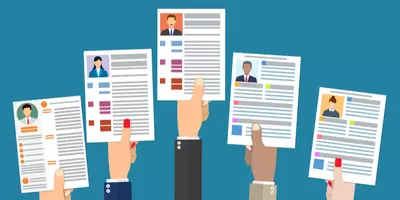
Sep 10, 2017 ● Kate Lopaze
Does your resume pass this key checklist?
Life is better with checklists—after all, how great does it feel to get something off of your mind with the satisfying swipe of a pen? (Or a tap of the screen, if you insist on being digital about it.) And your job hunt is better with checklists too. These no-nonsense lists keep you honest and on the right path, letting you track your progress and figure out what still needs to be done. A checklist reduces that the chances you’ll make a mistake at a crucial moment, which is something we’re all prone to do sometimes, being human and all.
As you work hard on your resume, one of the best setup moves you can make is to keep a checklist of all the necessary elements. You want to make sure you’re not taking any shortcuts that can come back to haunt you, or leaving out important pieces. Let’s walk through this checklist, and how to approach it.


The Resume Header
The header is the first thing anyone sees about your resume, so it’s important to hit all the highlights, without taking up too much real estate on your resume. You should include:- Your name: This should be your full name, or at least the one you plan to go by professionally.
- Your mailing address: This is your straightforward street/city/state/zip code address.
- Your phone number: This should be where you’re most easily reachable. If you have both a landline and a cell phone, you don’t really need to list both—just whichever is your preferred contact method.
- Your email address: This should be your most professional-looking email address. That means something along the lines of firstname.lastname@emaildomain, not HappyUnicorn666@emaildomain.
- A link to your LinkedIn or professional portfolio (if relevant): Do you keep your LinkedIn profile green with updates and new professional content? If you have an actively updated professional networking site, include it here. If you haven’t bothered to update it in years, skip it. The same goes for any personal websites. The content should be relevant and freshly updated, if you’re going to go out of your way to include it as a context point on your resume.
The Introductory Section
Between the header and the meat of the resume, there’s the highlight reel that’s designed to make the reader want to read further into your resume. Depending on your level of experience and what your goals are for this job search, what you include here can vary. But you should include at least one of the following:- Headline: This is a brief, one-line statement that explains your top qualities for the job. This works on virtually everyone’s resume. Example: Highly Organized, Bilingual Administrative Assistant
- Summary: This is a short list (or brief paragraph) of the key bullet points that make you most qualified for this particular job. This is a place where you can really tailor the content to the job description, to grab the attention of the reader (or robot reader seeking keywords). You can also use it to highlight your most relevant skills. A summary works best for job seekers who have deep experience or skills in their field.
- Objective: This is a short statement letting the reader know your goal(s), coupled with your top-level qualifications. It’s basically a formula: Strong traits + The role you want to fill + Good fit for the company = Objective. The objective works best for people without a lot of experience, or experience in a different field (changing careers).
The Meat-and-Potatoes Section (Skills and Experience)
This is the heart of your resume, so it’s extra important to make sure you’re not leaving anything out. You should include:- Your Skills: Whether you put these before or after your experience (depending on which you want to emphasize for the reader), it’s important to include a standalone section of bullet points describing your relevant skills. Be sure you’re only including the most relevant ones. Your abiding love and talent for playing the tuba may be a huge part of your life, but if it’s not directly relevant to the job for which you’re applying, leave it out.This section should include any applicable hard skills (specific job-related technology or certifications) and soft skills that can be directly applied to the job at hand.
- Work Experience: These are separate listings for your most relevant jobs, working backwards through your career. Each work experience section should include:
- Job title
- Company name
- Dates worked
- 4-6 bullet points outlining your most relevant duties there. As much as possible, describe achievements over simple tasks or responsibilities. You should also be choosy about which jobs you include. If you’ve already held two or three full-time jobs in your career, you can start leaving out part-time jobs or internships that you held in the past. If you need to include a job so it doesn’t look like you have large gaps, you can do that, but you don’t have to include too much information about your job unless it’s relevant to the one for which you’re currently applying. You can use those instead to highlight particular skills you used/developed.
The Education & Certifications Section
Education is one of your best assets in a job search, and you should sing it loud and proud on your resume. Just make sure you’re including the most relevant education information, moving back in reverse order. If applicable, you should include:- Professional training programs: If you’ve completed a non-degree course or training program related to your field, include it here.
- Professional certifications: If you have a license or certification in your field, include it here.
- College, university, or professional training program: Unless you’re in high school, or you’re specifically asked about it, there’s no need to include information about your high school education here. You also don’t need to include graduation dates if you don’t want to do so—employers are forbidden from asking you about your age, so if you feel like this would be offering too much info, you can just include the school name and the degree you received.
The Nice-to-Haves
If you have room after including everything outlined above, then there are some other pieces of info you can include on your resume, if they’re applicable to the job.- Volunteer experience: Are the skills or experience from this volunteer position relevant to the job you’re seeking? If so, include. If not, leave it out.
- Hobbies: Again, make sure these are relevant to the job for which you’re applying.
The Style Checklist
Once you’ve got all your core info included in your resume, it’s time to take another pass and see how you’ve done, writing-wise. Is your resume:- Saved as a standard document format? Is your resume saved as an uncommon file extension, or one that most computers will readily recognize (like .doc or .pdf)?
- A short read? Brevity is key here. We’ve all heard the “one page” rule, but if you simply have too much experience for one small page, make sure you haven’t gone overboard, length-wise.
- Organized in a clear and readable way? The resume should be laid out in a clear, relatively uncrowded outline, so that the reader can easily follow what’s going on. If you’re seeing massive chunks of narrative text, go back and revise it into more manageable bullets. Margins should be no less than 1 inch all around, for readability. Your font should also be consistent all the way through, easy to read, black, and between 10-12 points.
- Full of action verbs? Strong verbs can not only grab interest, they can help you cut down on your overall word count by getting straight to the heart of what you want to say.
- Customized for the job? Generic resumes are not fun to read, and a one-size-fits-all behemoth may not get you the interview opportunity you want. Take the time to make sure that your skills and experience especially are directly relevant to the job/company for which you’re applying.
- Proofread? This one is non-negotiable. No matter how eagle-eyed you may be, we all miss small mistakes in our own writing occasionally. Find a trusted friend or family member to check your resume for mistakes.
The Un-Checklist
If you have any of these things on your resume, time to take them out. You should not include:- Pictures or visual elements: Unless you’re doing a portfolio or a visual resume, don’t illustrate your basic resume. And you definitely don’t need to include a picture of yourself.
- Lies: Just don’t do it! If anyone questions you or catches you in a falsehood, I don’t think you need me to tell you that it would not be good for your hiring prospects for this job.
- References: If the hiring process gets to the point where you need to provide references, you’ll be asked for them. There’s no need to include them upfront and take up valuable space on your resume.
- References to age, gender, or family status This information really isn’t necessary, and could introduce potential discriminatory elements, even though employers are forbidden from asking you about them.


